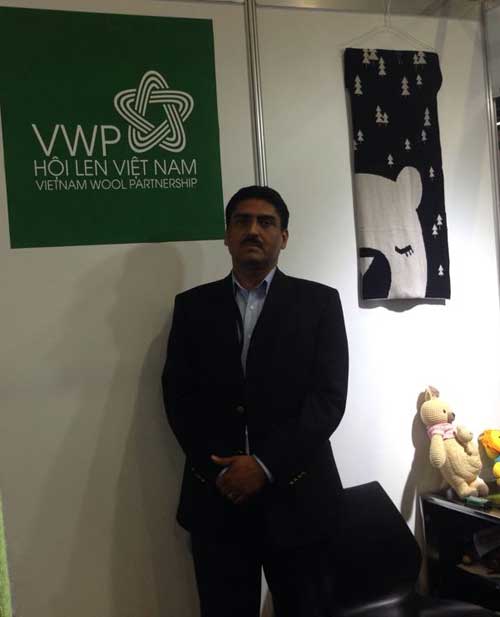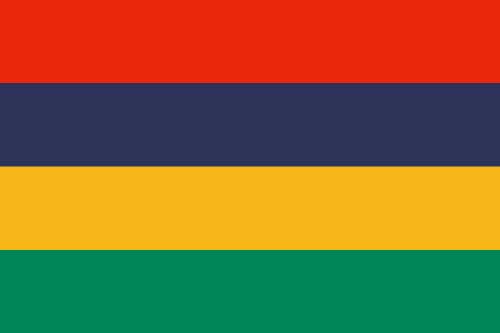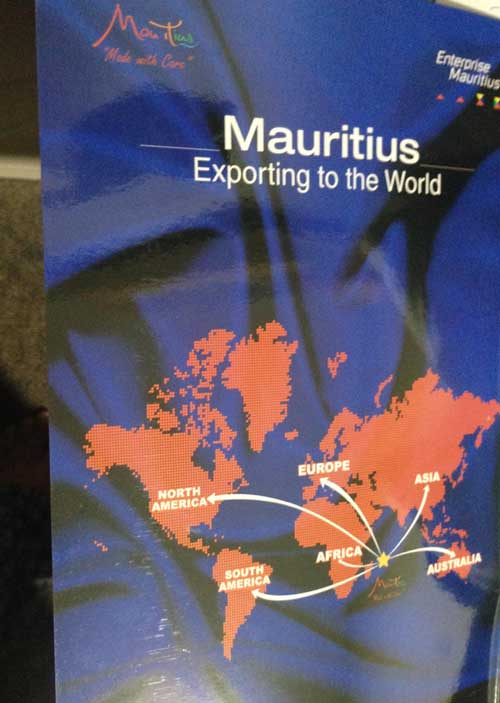FW
Woolmark has launched an initiative to establish manufacturing chains for wool in Vietnam.
Training is imparted to Vietnam’s knitters who produce wool products like sweaters, coats, suits etc in both flat and circular knitting. A few weaving units produce wool and wool blended fabrics for corporate uniforms and these companies will gradually start focusing on high fashion.

ISEA is a great platform for Vietnamese players to explore the Australian market. Vietnam Wool Partnership is one of the booths at ISEA.
Wool constitutes less than 1.2 per cent of the global consumption of fibers, yet it remains one of the most sought after fibers at the premium end. Wool leads to skin comfort. The crimp in the fiber makes wool good for all seasons. Additionally wool retains odor better than any other available fiber. Another interesting feature it imparts is crease resistance.
Hence the sum total of all this is that wool is unique and distinctively useful for sportswear, active and sleepwear garments. Wool is the preferred fiber for all these categories.
Mauritius is a country which can boast of having one of the best infrastructures in Africa. It has a population of 1.2 million with the main languages being English, French and Creole.

The textile and clothing industry of Mauritius is into knitwear, kids’ wear, trousers etc. But knitwear is where it excels in and enjoys international prowess. Mauritius has quite a few vertically integrated units. The country is developing the capability and capacity to cater to the needs of global buyers especially US buyers.

Over the years its cost of manufacturing is going up and part of the supply chain is shifting to Madagascar for exploiting the cost arbitrage as it continues to have some tariff advantage through trade pacts like AGOA. The USP of Mauritius is the reliability and credibility it has built in its buyers’ community which is the holy grail of its continued relevance to the ever changing sourcing landscape.
Enterprise Mauritius, the promotion agency for Mauritius’ textile and clothing industry, is one of the exhibitors at ISEA November 2017.
Levi’s is developing out-of- the-box business strategies. The retailer has developed new innovative initiatives, including wearable technology products and designer collaborations, to keep consumers part of its story.
A rich denim history comes along with Levi’s market presence. Collaborations have been key to keeping Levi’s heritage alive. Last month, the brand celebrated the 50th anniversary of its iconic 1967 70505 Type III trucker jacket by partnering with 50 influencers from around the world to create their own versions of the jacket, and consumers can choose the trucker jacket that fits with their personal style aesthetics.
Levi’s recent dabble in wearable technology is an example of the brand’s stay- ahead-of- the-curve commitment. In September, Levi’s and Google launched a new Levi’s commuter trucker jacket—a smart denim jacket woven with conductive yearns that connect to mobile phones—for its tech-influenced consumer base. This partnership enabled Levi’s to not only be viewed as a denim authority, but a denim authority with a mission to drive innovation in coming years.
Consumers are driving just about everything at retail today, and some companies are building a robust digital presence and developing innovative concepts to keep them engaged. They are locking in consumer loyalty amid store closures and retail’s uncertainty.
Ghana’s textile industry is in dire straits. The industry’s woes started in early 2000 when original designs made by Ghanaian textile companies were stolen and reproduced cheaply in China for the Ghana market. The industry which had so much potential was pushed to its knees as the high cost of production and the influx of cheaper and pirated textiles from China left it helpless. The textile industry which used to employ over 25,000 people has seen a decline in production since 2005, leading to massive lay-offs. The workforce in the industry has dropped by over 80 per cent since 1985.
Production of fabrics was 130 million meters in 1975, 46 million meters in 1995, 65 million meters in 2000 and 39 million meters in 2003. Today, production is below the 30 million meter mark. Workers are calling for the re-activation of textiles piracy task force set up in 2010 to deal with traders in counterfeit textiles.
While locally produced cotton is used by firms, many of the dyes, chemicals and machines are imported from abroad at significant prices. The market is flooded with counterfeit textiles. The borders are porous with only a few of them manned by security people, making it very easy for these counterfeiters to pass through.
The three-day India International Garment Fair will be held in New Delhi, January 17 to 19, 2018. The fair will showcase the entire range of women's wear, men's wear, children's wear and fashion accessories. Around 350 garment and accessories manufacturers will display their collections.
IIGF is one of the largest and most popular platforms in Asia where overseas garment buyers can source and forge business relationships with India's finest in the apparel and fashion accessories domains. It is the flagship event of the Apparel and Export Promotion Council (AEPC) and has been building bridges between global buyers and suppliers from India for the last three decades.
For this edition, AEPC has partnered virtual fashion trade show platform Fashionablyin to create a virtual buyers’ lounge. Fashionablyin aims to make buyer trips more efficient by engaging them with the right suppliers. The company will match buyers with suppliers by planning meetings in advance and facilitating discussions with suppliers.
The Fashionablyin Virtual Buyers Lounge will be a great place for buyers and suppliers to connect and build relationships in a friendly and casual environment. With the dynamics of the global garment and apparel industry changing considerably in the last couple of years, the industry is shifting to India, the world’s most diversified clothing exporter.
Make it British was held on November 2 and attracted over 200 designers, manufacturers, retailers and academics, who gathered together to join a debate on how to build a British brand.
The UK textile industry, which has been in persistent decline since the late 1970s, has finally seen a rebirth. Several textile mills have opened, including the first cotton spinning plant in the UK for decades. Several factors have contributed to this turnaround. The cost of producing overseas has risen, particularly since the Brexit referendum, and the way the exchange rate is going has helped new UK producers and brands. Suddenly it has become more affordable to manufacture goods in Britain.
There has been a 25 per cent rise in the export of British-made clothing since 2011 largely due to emerging markets such as China and the US wanting to buy more products made in the UK. Issues like sustainability and transparency were acknowledged as some of the key aspects of having a manufacturing plant based in the UK. For manufacturers having a factory in the UK means they are flexible and very agile. Also, it means they are less exposed to currency fluctuations.
The shared opinion was, however, that it is important not to forget about functionality and relevance of the product, which should come before the emphasis on Brand British.
India took part in the International Apparel and Textile Fair, November 1 to 3, 2017, Dubai. The delegation comprised leading Indian clothing and textile groups, who are into various products like men’s wear, kids’ wear, high fashion women’s wear, technical textiles etc.
India is positioning herself as a high fashion and quality garment exporter. There is a huge potential to promote Brand India in the UAE and other markets in the region. India is the UAE’s largest trading partner and its exports to the UAE during the year 2016 touched $32 billion. This was 22.7 per cent of India’s garment exports to the world. The UAE provides excellent opportunities for Indian companies to utilise Dubai’s location as a platform for increasing exports to other countries.
India and the UAE can work together in the textile segment to promote high quality and fashion clothing, which can be exported not only to the West Asia and West African region but also to other developed countries including the EU and the US. The Federation of Indian Export Organisation not only helps Indian exporters find markets across the globe but also helps overseas businessmen to do matchmaking and enter the Indian market.
Finland-based fashion chain Lindex has made a range of denim using only a bottle of water, which is about two liters of water. The conventional washing process for a pair of denim jeans requires 50 to 70 liters of water. Lindex developed its new ‘Even Better Denim’ with Jeanologia, a denim technology and solutions provider based in Spain. The new process uses air and laser technology.
Even Better Denim styles are available for women and children. Even Better Denim is made from eco-friendly materials, including recycled polyester and post- consumer recycled cotton. Each pair of jeans is dyed in clean indigo dye and uses more sustainable trims, including buttons, pocket bags and zippers.
In 2014, Lindix began focusing on sustainable denim. Over the last three years, Lindex’s progress has led to 100 per cent of its denim assortment being classified as Better Denim—meaning, the garments are made from more sustainable materials and washed with only eight to 12 liters of water. Lindex’s goal is to continue its work with Even Better Denim styles and to develop additional low- impact apparel in the future. The goal is to offer customers denim with the least environmental impact possible.
The USDA raised its estimate for US cotton crop to 300,000 bales. The crop size was increased based on USDA increasing the average US yield to 900 pounds per acre. All states in the Southeast averaged at least 900 pounds per acre and all states in the Midsouth averaged above 1000 pounds per acre.
US carryover was increased 300,000 bales, up to 6.1 million. Certainly a few more hands must be played, but the odds favor a somewhat smaller final crop size and bigger export number. Thus, a carryover closer to 5.5-5.6 million bales is likely on the horizon.
With futures between 67 and 72 cents mills will continue to flock to the US for cotton. US cooperatives and merchants are aggressively offering strong basis bids to potential mills and that has encouraged excellent sales. It is a far more economical trade for mills versus other cottons. Mills can take advantage of the basis offers, buy On-Call and fix prices at later date. Granted, mills have not been very astute at fixing the price the past two years, but possibly they will begin to finally pay attention this season.
USDA raised its estimate of world cotton demand 1.3 million bales over last month’s estimate, and is now up to 119.3 million bales, more than 5.0 million bales more than last year. Being redundant, demand moves markets and the demand for cotton will continue to grow. Driven by consumer preferences, and the rapid increase in polyester prices due to massive worldwide pollution issues that are still seemingly denied by the casual wear brands like Nike and Adidas, as well as some of the big box retail groups, cotton has become much more price competitive versus polyester and other plastic fibers.
In order to attract investment, the Bihar industries department and state apparel and textile sector in association with Apparel Export Promotion Council (AEPC) organised a meet at Ludhiana to showcase initiatives taken by the Bihar government.
The state’s principal secretary (industries) S Siddharth gave a detailed presentation on policy initiatives, infrastructure, ease of doing business and availability of land and skilled workers in Bihar. He pointed out they have launched an online single window clearance system for investors to submit their proposals from any part of the world. Approvals will be granted online, further around 2,000 acres of land is available with the state government for allotment to investors.
Leading exporter and AEPC's Harish Dua said they plan to visit Bihar soon to decide on investments in the state. Investment commissioner R S Srivastava stated there is large domestic market in Bihar with a population of over 11 crore. Also, the state provides electricity for more than 22 hours a day throughout the state.












